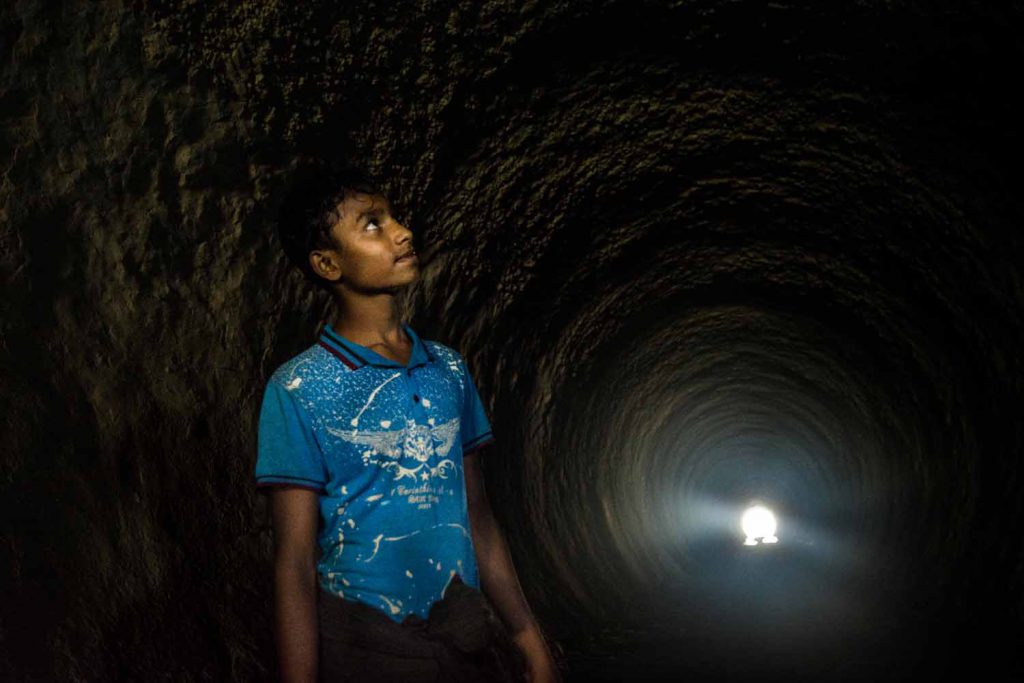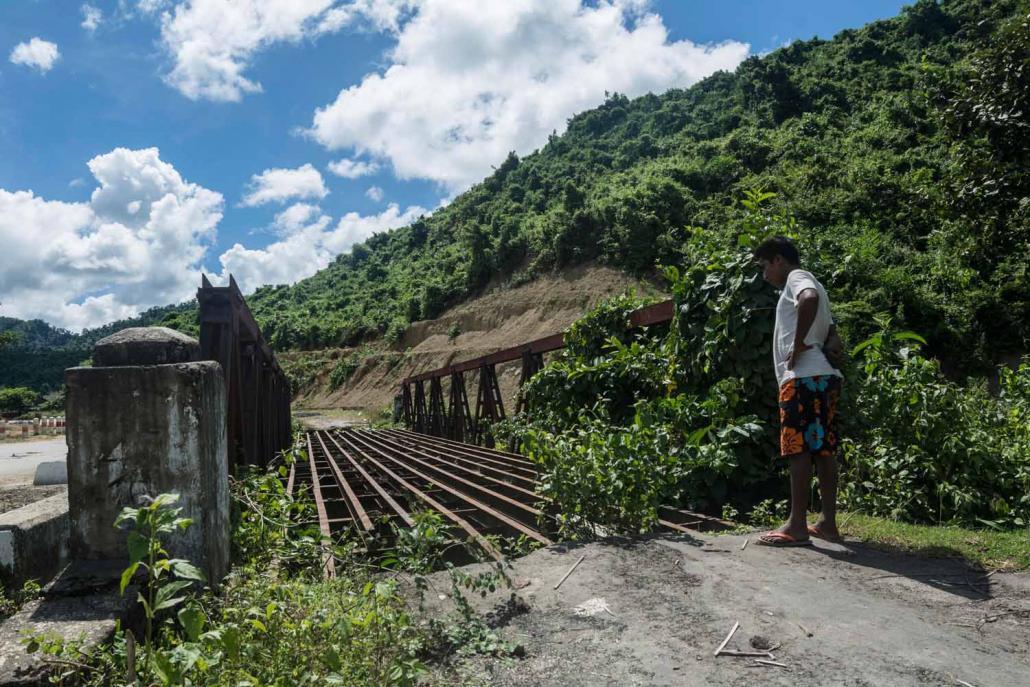In 1918, work began on a railway that the British hoped would provide a trade link between the subcontinent and China and its remains are rich with history.
By MRATT KYAW THU | FRONTIER
Photos TEZA HLAING
THE BRITISH had some grand plans for Burma under colonial rule and they included an ambitious project to build a railway aimed at promoting trade between India and China and carrying labour from the subcontinent to Arakan, now Rakhine State.
The proposed railway was to link Chittagong and Mandalay, via Sittwe, then known as Akyab. It was to connect with a line linking Mandalay with Kunming in China’s Yunnan Province via Bhamo, but the project never went ahead.
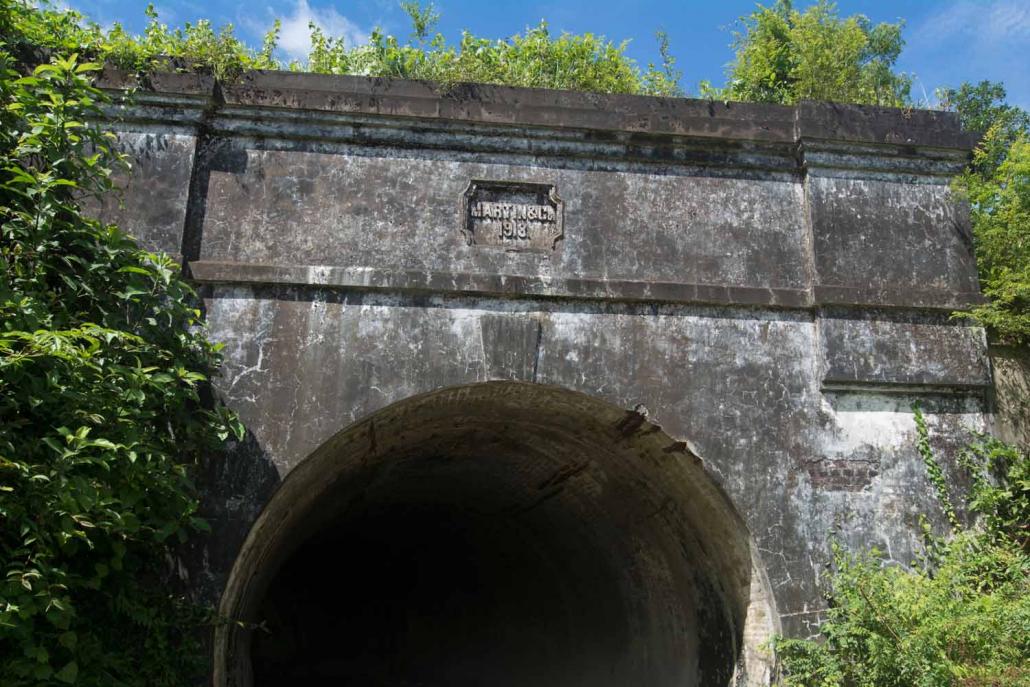
Until alternative routes opened recently, the rail tunnels were used by cars travelling between Maungdaw and Buthidaung. (Teza Hlaing / Frontier)
The Eastern Bengal Railway, linking Kolkata, the capital of British India until 1911, with Chittagong via Dhaka, had been completed in 1865.
Work on a section of the railway in the then Arakan Division began in 1918 but it did not get very far, linking Kanyinchaung village in Maungdaw Township, with Buthidaung Township, a distance of about 25 kilometres.
Crushed rock used as ballast for the railway can still be found at Shwezar village, near downtown Maungdaw. The route of the railway is now a road linking Maungdaw with Kanyinchaung and Shwezar villages.
class=
Elderly residents of Kanyinchaung, which is on the Naf River that forms the border between Myanmar and Bangladesh and is being developed as a small economic zone, say the road was built in the 1960s.
Asked about the origin of the road they said: “It was a railway once, but that’s all we know.”
Other relics of the railway include the rusting piers of a bridge over a creek between Maungdaw town and Shwezar that flows into the Naf and two tunnels, built in 1918.
tzh_british_railway2.jpg
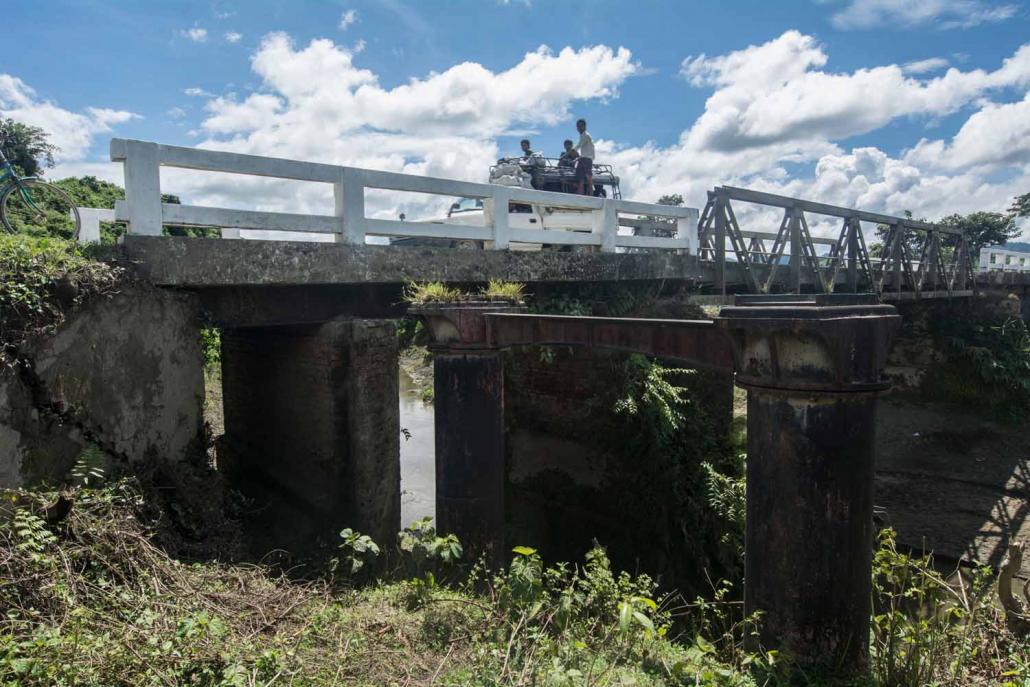
title=
One of the tunnels, about 12km east of Maungdaw town, was built by Kolkata-based Martin & Co, renowned for some of the finest buildings in the then capital of British India. They include the grand Victoria Memorial, completed in 1921 and built in honour of Victoria, Queen of the United Kingdom of Great Britain and Ireland and Empress of India, who had died in 1901.
The tunnel is about 240 metres long and was lined with concrete. It was used by cars until early this year when it was closed and has since been replaced by a new road paralleling the railway that opened a few months ago.
About 5km away is another tunnel, also built by Martin & Co, which merged in 1946 with another prominent Kolkata construction firm Burn & Co to form Martin Burn Ltd, which continues to operate in the city.
The 110m tunnel has been used as a shortcut by pedestrians and small cars but has also been replaced by a parallel road built by the regional government that opened in July.
tzh_british_railway9.jpg
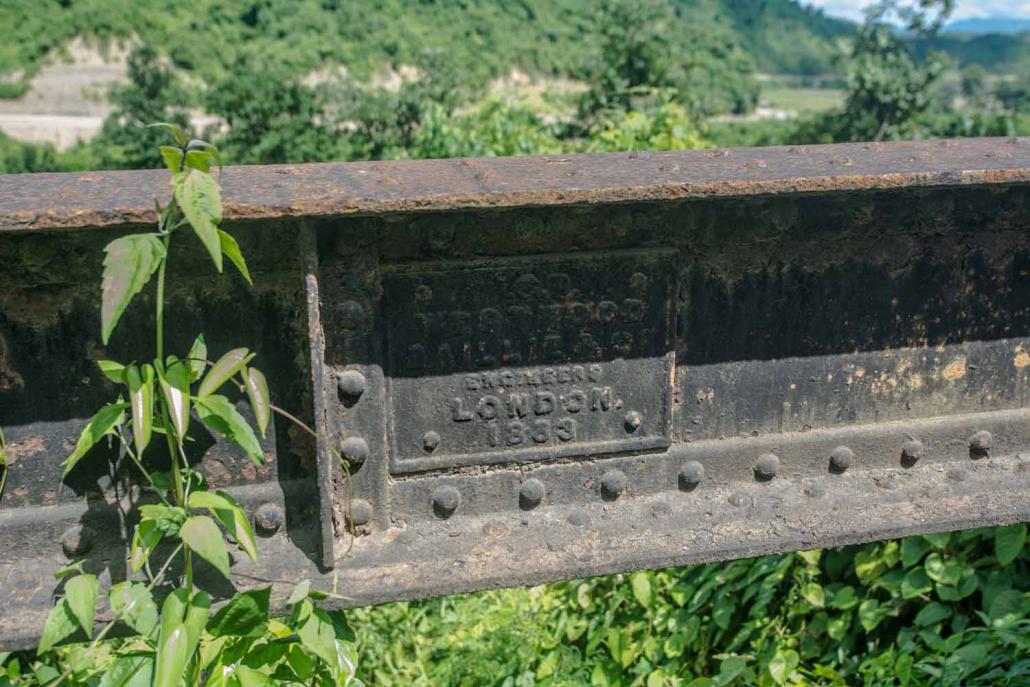
title=
Another 1.5km from the tunnel is a big gully containing what seems to be the remains of bridge, including a pier, and nearby are girders bearing the name, Westwood, Baillie & Co, Engineers, London, 1883. The company was established in 1856 and specialised in making iron and steel work for bridges.
In 1887, it made the girders for the Lansdowne Bridge over the Indus River in what is now Pakistan. An impressive feat of engineering, the bridge was the longest rigid girder bridge in the world when it was completed.
tzh_british_railway5.jpg
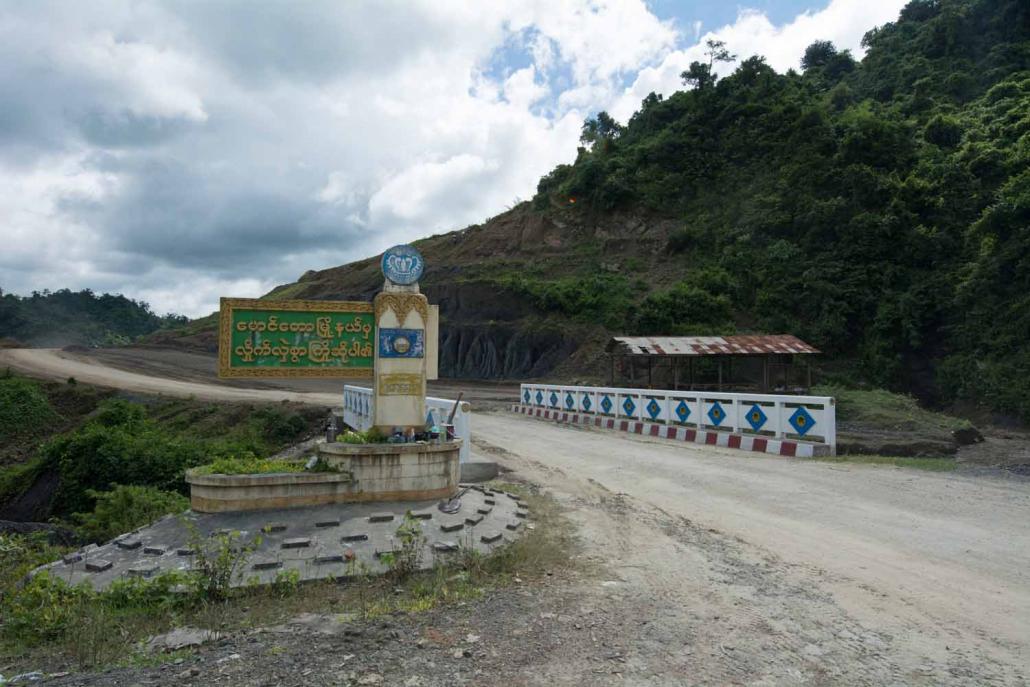
title=
Some older Maungdaw residents believe that the railway went bankrupt to Burma could not afford the fare and instead walked to Maungdaw from Chittagong.
This would have been a major setback for those who backed the railway because one of the reasons for building it was to carry workers from India to Burma.
They say that work on the railway stopped in 1926 when a ferry crashed into the bridge over the creek at Shwezar village during a storm, causing serious damage.


